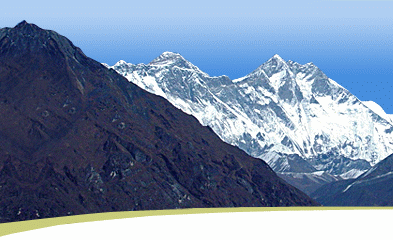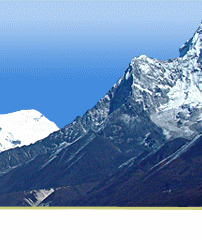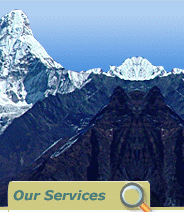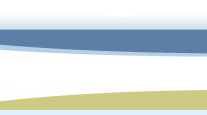| The Everest region
is located in the northeast of Nepal. The most visited
part of this region is Solukhumbu district, home of
the legendary Sherpa and the highest peak of the world,
the Mt. Everest at 8,848 meters. To the north of Solokhumbu
is Everest National Park; while to the east is the Makalu
Barun National Park. The major ethnic groups that live
in the Everest region are Sherpas, Rais, Tamang, Brahmins
and Chhettris. Diverse range of wildlife and vegetation
are seen in the region. Animals to be sighted are mountain
goat, musk deer and barking deer in the forests. Birds
include Impeyan Pheasant (Danfe), ravens, crows, and
choughs and show pigeons. The best time to visit is
spring and autumn. Popular trekking areas are Everest
Base Camp, Gokyo Valley, Lukla, Pike Danda, Dudh Kunda,
Salleri, Chiwong Circuit, Hindhu, Hongu valleys and
Everest to Arun Valley. Interesting landmarks near Syangboche
are Khumjung School built by Sir Edmund Hillary in 1961.
Permits and Fees
No special trekking permits are required
to visit this area provided that the trekker's do not
climb any of the peaks. An entry fee is charged for
access to Everest
National Park. This is payable at the national
park desk in Thamel. For treks to the east of main Everest
trail an addition permit is required to enter
Makalu-Barun National Park obtainable from
the same location.
Getting There
Everest region can be reached by air or
on foot. Buses to jiri leave from the new bus park in
Kathmandu. Jiri is a ten-hour drive from Kathmandu.
By air, there are three options; the most convenient
for Everest trek is Lukla, which is served by many airlines
with daily flights from the capital. The last choice
is the small airstrip at Syangobche, which is located
above Namche Bazaar. Despite being an option altitude
makes it an impractical and unwise choice as an arrival
destination for acclimatization reason.
People and Culture
The main ethnic group that visitors will
encounter in the Everest region is the Sherpas. This
is their heartland and their influence is to be seen
everywhere from their traditional dress to their distinctive
houses and village monasteries. There are also minorities
of various other groups, notably Rai and Tamang in the
lower hills and the ubiquitous Brahmin and Chhetri farmers
of the valleys.
Flora and Fauna
The flora and fauna to be seen are quite
diverse since the region ranges in altitude from less
than 200 meters above sea level at Jiri to the high
peaks of the Himalayan at over 8000 meters. Up to 4000
meters you will find dense stands of forest including
pine, cak and the spectacular flowering rhododendrons.
The latter are one reason to make a trip to Nepal in
the spring when the hills between 2000 and 3500 meters
are a rich of cultures.
The crops under cultivation will depend
on the season that you visit but expect to see wheat,
barley, corn and potatoes at some stage. Domesticated
animals will range from cattle, buffalo, goats and pigs
to the all-purpose beast of the mountains the yak.
There is a good chance of seeing wildlife,
mostly birds including the national bird of Nepal-the
Impeyan Pheasant, or Danfe, which is quite common around
Namche Bazaar. Other notable birds will include the
ravens and crows of the middle hills and the choughs,
which soar to seemingly impossible heights in the mountains.
Also in the mountains look for flocks of snow pigeons
wheeling around the hillsides.
Land animals can be more elusive
but look out for mountain goats (most commonly the Himalayan
Tahr) and if you are lucky, musk deer or barking deer
in the forests.
How and When
How to trek in Everest region depend entirely
on the route that you choose. On the main trail to Everest
base camp or the route to Gokyo valley then teahouse
trekking is perfectly possible. The trail in from Jiri
is also endowed with many continently located teahouses
although generally not of such a high standard as those
to the north. Other trekking routes will almost certainly
require the use of camping and organization of trekking
staff and equipment. See the following individual route
description for detail.
When to Visit?
The peak seasons of October/November and
March/May are obviously the most popular. At these times
the weather is mild and generally dry, making the walking
conditions good. The spring season is good for wildflowers,
particularly the rhododendrons, while the autumn season
generally gives the best mountain views, as the air
at this time is crystal clear.
Winter is possible but the chances of
snow are higher and passes may be closed, particularly
during late winter. Also during this time many of the
teahouses will close. The summer/monsoon period is generally
unsuitable for trekking, as the trails are slippery,
leeches abundant and the mountain views are unpredictable.
It can be a rewarding time, however, if you are prepared
to tolerate these drawbacks, as the wild flowers are
at their best at this time and there are fewer tourists
on the trails making interaction with the locals easier.
Looking after the environment
Much has been said about the deteriorating
environment of the Himalaya. Over that past few years,
due to effort by many overseas expeditions and organizations
such as the Sagarmatha Pollution Control Committee and
Nepal Mountaineering Association, education programmes
and clean-up campaigns have, to a large extent, solved
many of the problems.
Having said that, the environment of the
high Himalaya is a very fragile eco-system that is easily
put out of balance. The locals lived for generations
in relative harmony with their surroundings but the
recent influx of tourist has put pressure on the indigenous
populations to supply more and more services in the
name of tourism development. While the Everest National
Park is somewhat protective from the worst ravages the
same cannot be said about the area immediately to the
south. Here, uncontrolled timber collection for fuel
and building has led to a marked loss of timber cover.
Certain initiatives within the National Park area, such
as the banning of glass beer and soft drink bottles,
had resulted in a reduction of the amount of non-biodegradable
rubbish being left behind. Much more can be done, however,
particularly by the trekkers themselves. The KEEP code
of trekking conduct is a perfect example.
|






